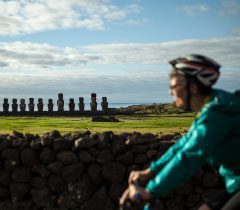Explora architecture: unique buildings nestled harmoniously in the wildest of landscapes
Since 1995, the exploration company Explora has dazzled the world of architecture and design with the construction of lodges in distant and almost dream-like destinations. The creative process of these works has been at the hands of renowned architects such as the National Architecture Prize winners José Cruz Ovalle and Germán Del Sol; as well as Max Núñez and the office of Aguiló & Pedraza Arquitectos. These experts have successfully met the challenge of designing buildings that complement the exploratory nature of the guest experience, as well as the burgeoning commitment of the company to conservation. Ultimately, to stay at an Explora lodge is to forge an intimate relationship with the built space and as much as the natural environment that surrounds it.
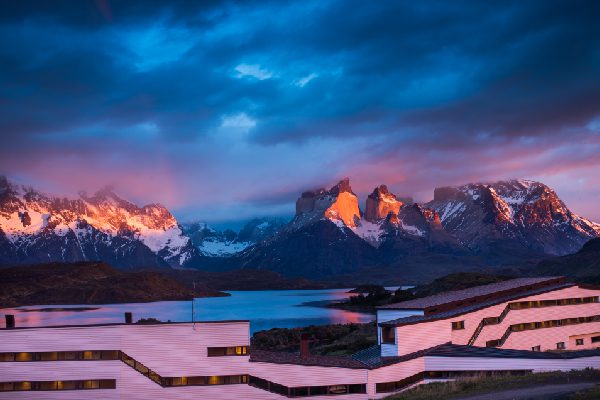
Primordial luxury, warmth and an interior space that reflects the cultural and natural heritage landscape of the exterior environment are key characteristics of Explora lodges. The architecture and design of each of the seven Explora destinations from Patagonia to the Sacred Valley near Machu Picchu have been created to reflect the unique qualities of the respective territories and their local cultures.
Explora’s architecture differs from other companies that offer hotel stays. Here, the view from the window at the lodge Explore Torres del Paine, is encapsulated in the interior design when you enter the bedrooms.
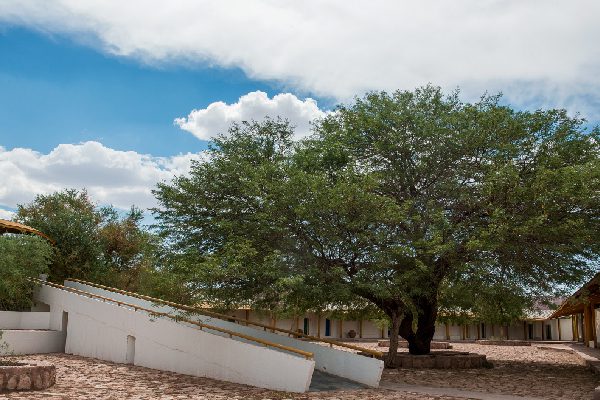
Architecture in dialogue with the world´s great untamed spaces
José Cruz Ovalle has been the architect for six Explora lodges. These include the Explora Valle Sagrado lodge, the Explora Rapa Nui lodge, the Explora El Chaltén lodge and the reconstruction of the Explora Atacama lodge. Cruz Valle was the recipient of the prestigious National Architecture prize in 2012 and has collaborated on the Hotel Explora Salto Chico in Torres del Paine, alongside fellow prize winner Germán Del Sol. The creative process, Cruz Valle explains, must be driven by a constant dialogue between the place and the space that is to be inhabited.
“My job is to find a way to shape an architectural aesthetic that reflects the intrinsic qualities of the landscapes,” Cruz Ovalle says. “That is to say, on the one hand I must make something that is inherently alien to a natural environment; but at the same time, it must be connected to the place in which it stands.”
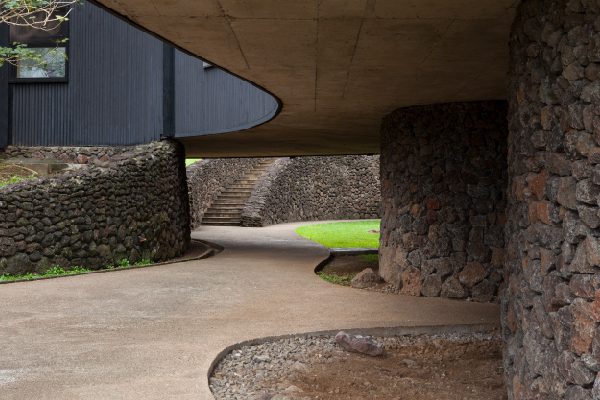
It is this relationship with the natural landscape that defines Explora´s architecture. The outer space is considered in the round, taking into account not only its physical characteristics but its local people and its past too.
“Easter Island is a case in point,” Cruz Ovalle continues. The moai statues can be understood as being seated in the ground and simultaneously emerging from it. They are an intervention on the horizon, and that horizon is always close because the island is small. The concept of space is brought into being by dialogue. The hotel itself has different shapes, and the moai are both part of that and seperate at the same time. This interplay is where art and architecture combine. A new way of reflecting on the visual is needed, because, to see things in different ways you need to not just look, but really observe.”
Cruz Ovalle notes that the architectural work slides seamlessly into the outside space. All of this area is in a way habitable, capturing the essence of the Explora philosophy, where the objective of the journey is not to reach the top of a mountain, but to live and be aware of each moment along the way.
“If you look closely,” Cruz Ovalle continues, “the Torres del Paine hotel is not built in a straight line; it is a journey that not only reaches Lake Pehoé, but you can also look back. You can´t ignore what is behind you, in front of you or to the side. Every element is present.”
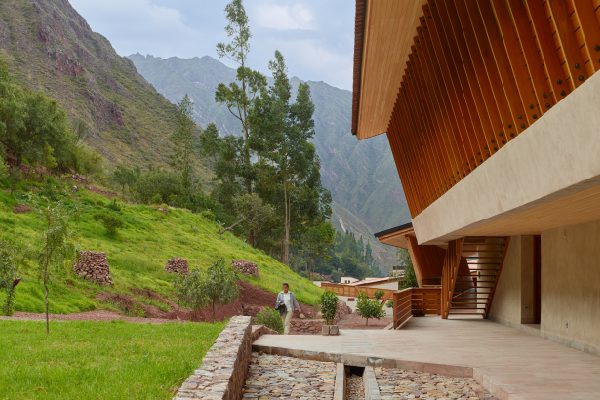
Noble and local materials that enhance the environment
The Explora Valle Sagrado lodge near Machu Picchu– also the work of architect José Cruz Ovalle – has sought out a place for itself, nestled amongst mountains and Inca agricultural terraces. Its fine and infinite lines make this building at one with the landscape. This idea of fusion and harmony was envisioned from the outset of its design. To achieve it, materials, and the techniques for working them, were researched from the local Incan culture.
“At the Sacred Valley lodge, some of the plastering was done using natural pigments,” Cruz Valle explains. “Local cement, stones and roofing techniques were also employed. All of these materials are opaque and dark colored, so as to blend in with the natural environment.”
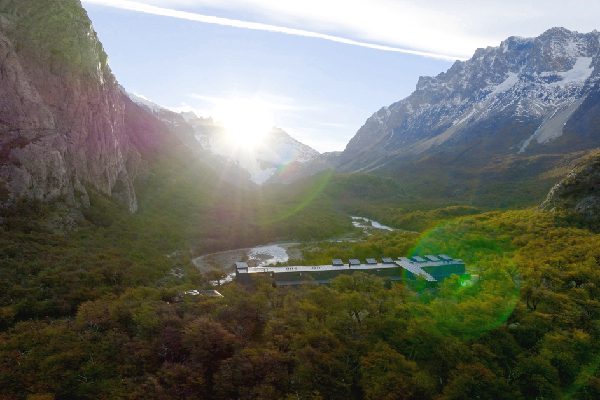
The materials and shapes created provide the building with a “living edge”, as the architect calls it. Cruz Ovalle refers to the depth of interaction the hotel has with the surrounding landscape: its design drawing on a wealth of inspiration from this natural environment.
In the same way, the Explora El Chaltén lodge, also by Cruz Ovalle, sought to make a self-conscious statement about its geographical sense of place, located between the Río Eléctrico Valley and the Marconi Glacier – both sites of enormous beauty in Argentinean Patagonia.
This crossroads of natural phenomena was reflected in El Chaltén by the use of resistant materials that could stand the Patagonian climate. The outside is clad with metal to weather the rain, cold and wind; whilst the inside is wooden to create a quieter and more welcoming space.
“A building´s architecture also determines its acoustics, Cruz Ovalle explains. We made the interior using wood because it had to be a tactile material that would provide the kind of soundscape we were looking for. Inside, you feel the inclement weather and you are close to it; but at the same time you have the warmth of a shelter and hospitality. This creates intimacy between people. This is a bespoke experience compared to what you would find in a hotel set in a different climate,” he says of Explora El Chaltén, in Chilean Patagonia.
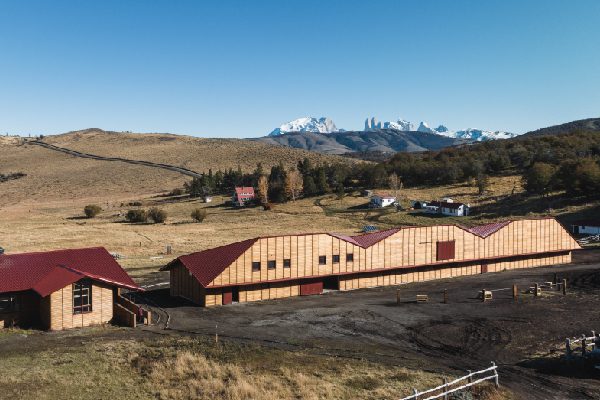
The value of history and sustainability in architectural design
For Rodrigo Pedraza, remote places are an opportunity to develop architectural practices that respect the natural landscape. You must meet the challenge of how to slot a new and foreign object into a territory whilst taking into account its biodiversity and the importance of its protection. Pedraza is an architect from the office of Aguiló & Pedraza Arquitectos. His company is currently working on the design of the Explora Torres del Paine Conservation Reserve,
When they began the project, the team of architects made up of Diego Aguiló and Rodrigo Pedraza were lucky enough to travel for up to 25 days on horseback and on foot whilst accompanied by local residents. The journey gave them a unique perspective on the architectural interventions they would carry out here.
“We knew we wanted to create a concept for a small hotel, a building for the operators, a center or porter’s lodge for the reserve as well as move some of the existing Explora stables into the reserve,” Pedraza reflects. “What we weren´t expecting was how the social and cultural dimensions of local history would protagonize the construction. We bore witness to this when the project breathed life into the local gaucho (cowboy) cultural heritage, with the restoration of an old sheep shearing shed.”
The shearing shed dated from around 1930 and seemed frozen in time with its old machinery and notched posts, demarking the number of sheep sheared. Its successful restoration as a meeting place for visitors heralded the subsequent decision to position the stables just next to it.
“We decided to build the exterior with heat-treated wood that doesn´t need any type of varnish or chemical treatment,” Pedraza explains. “The choice of materials, as well as how they would age over the next 50 to 100 years or more, was all very deliberate. Sustainability is about using resources thoughtfully, and about being awarene of where they come from. It doesn´t make sense to talk about conservation if there is no purpose or any willingness to embrace a different kind of architecture and construction.”

